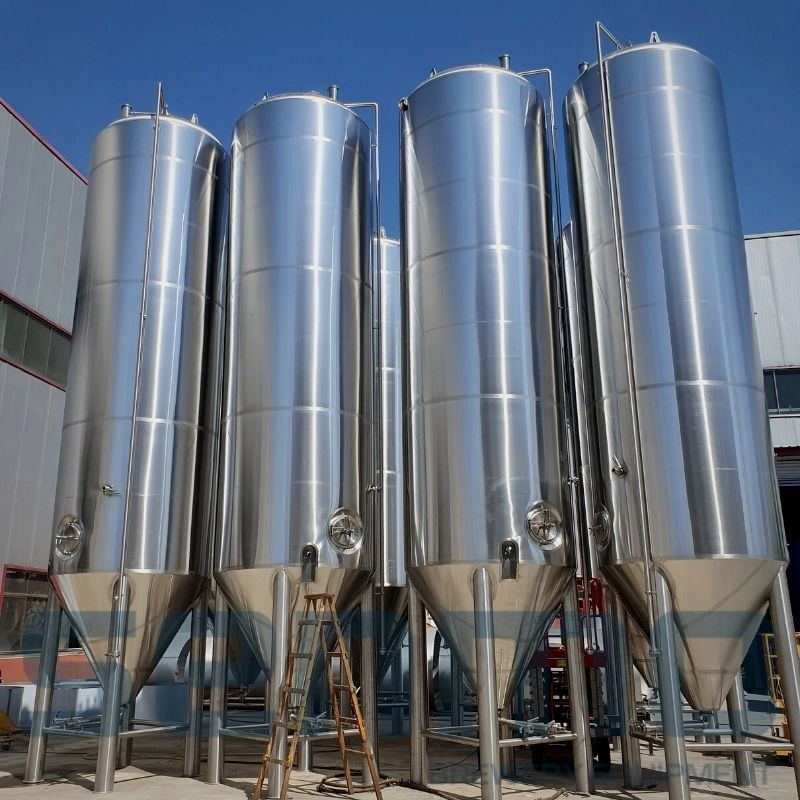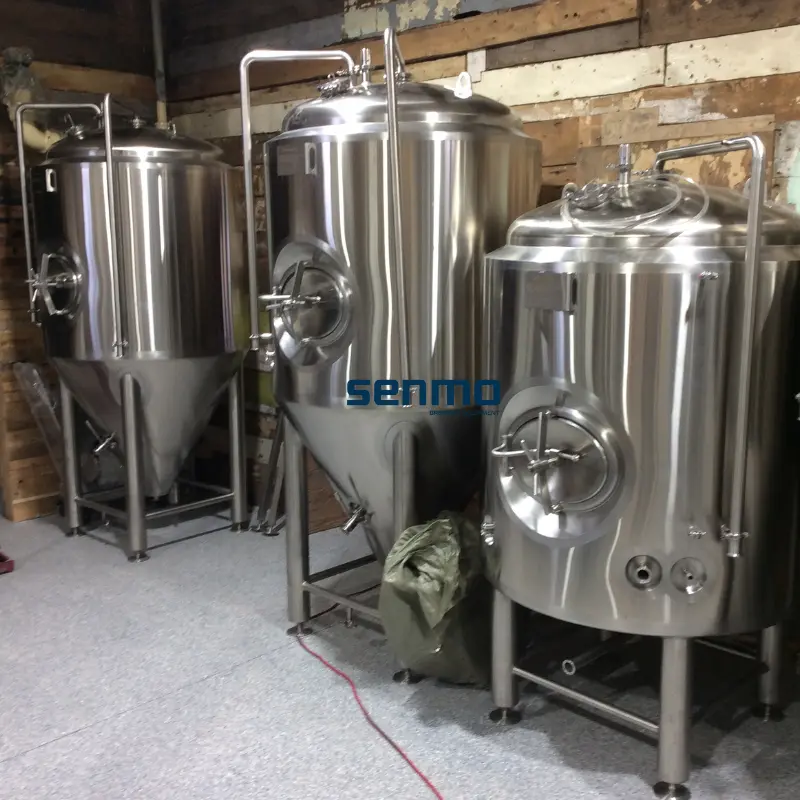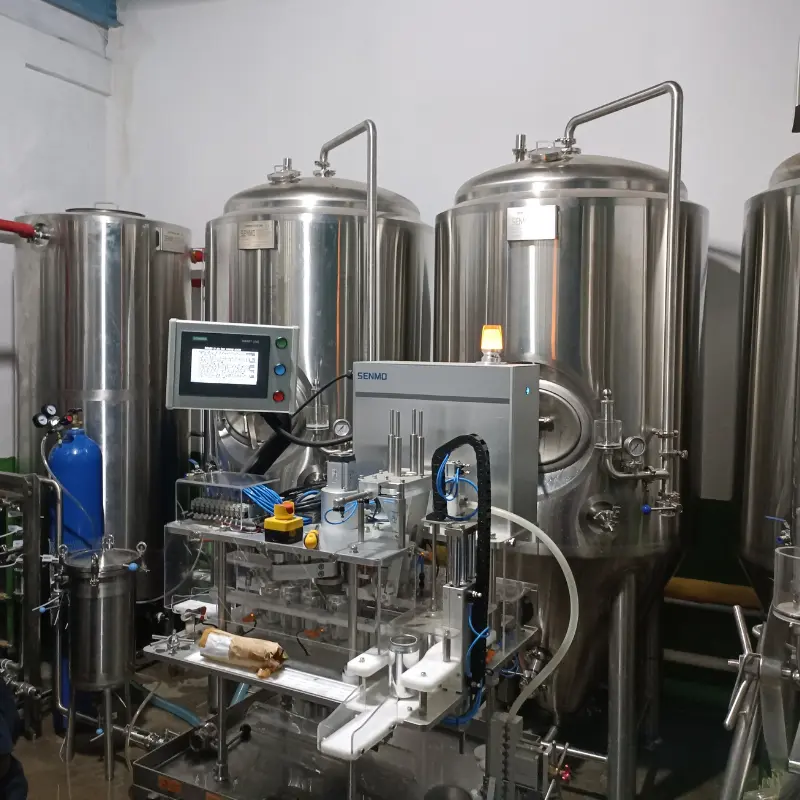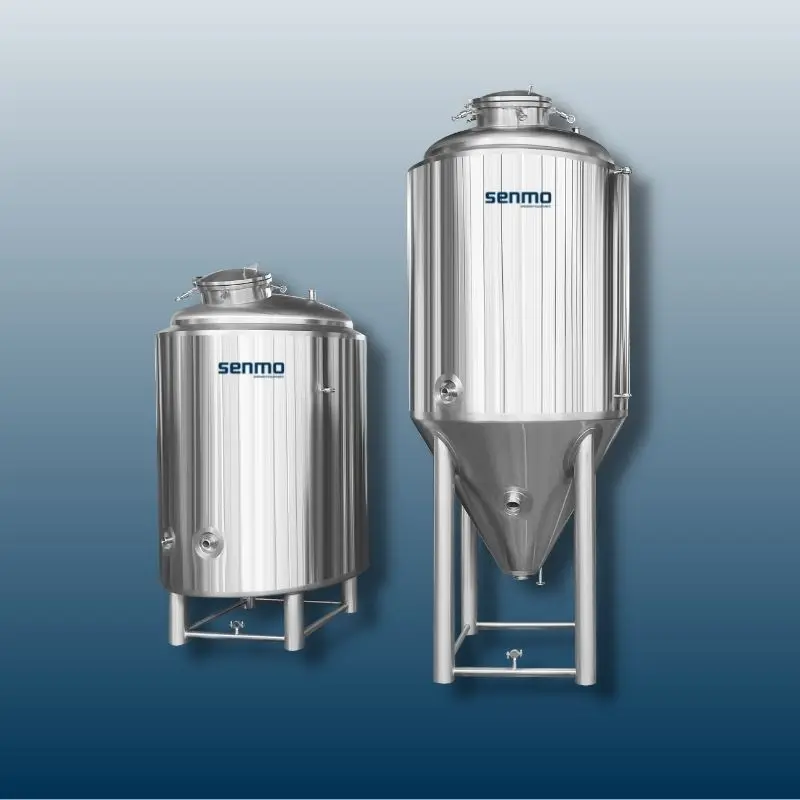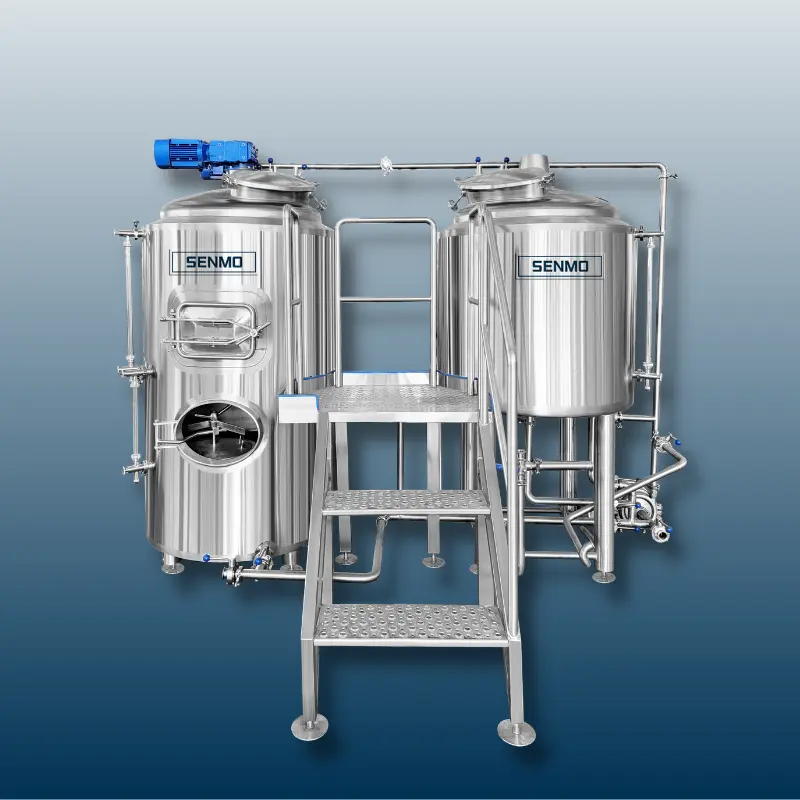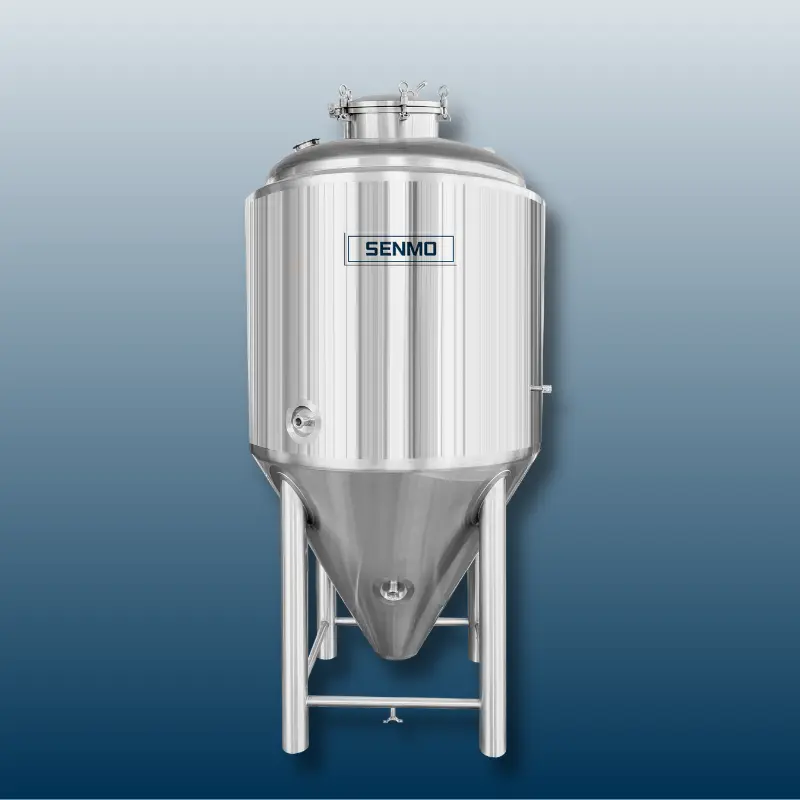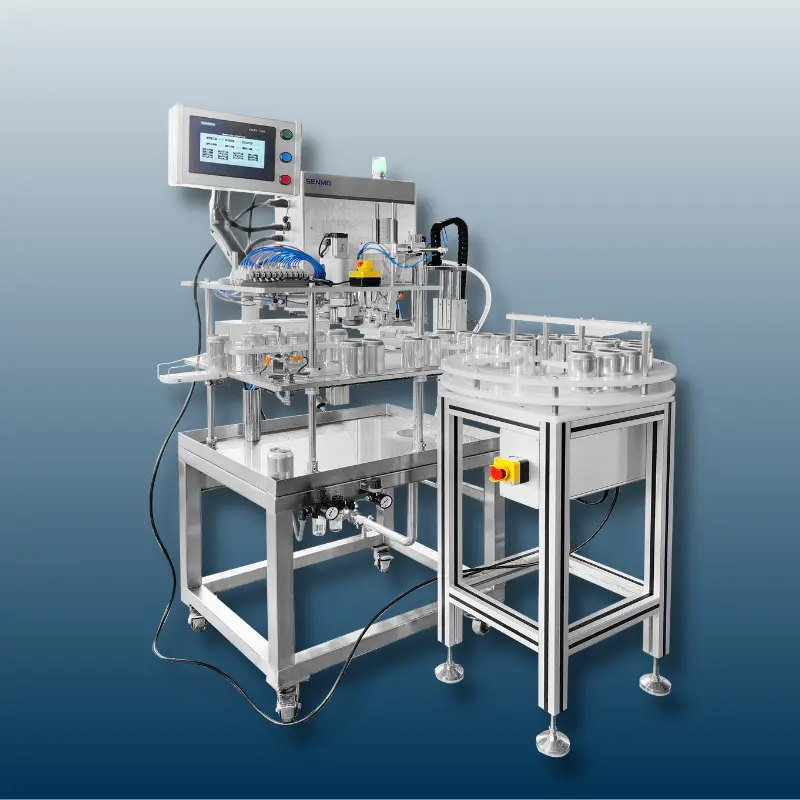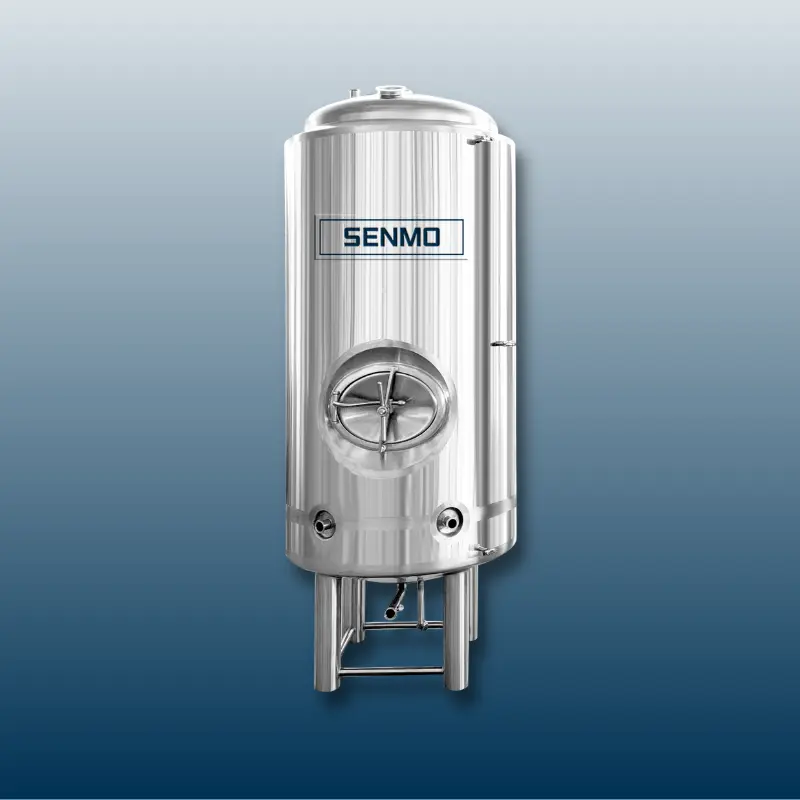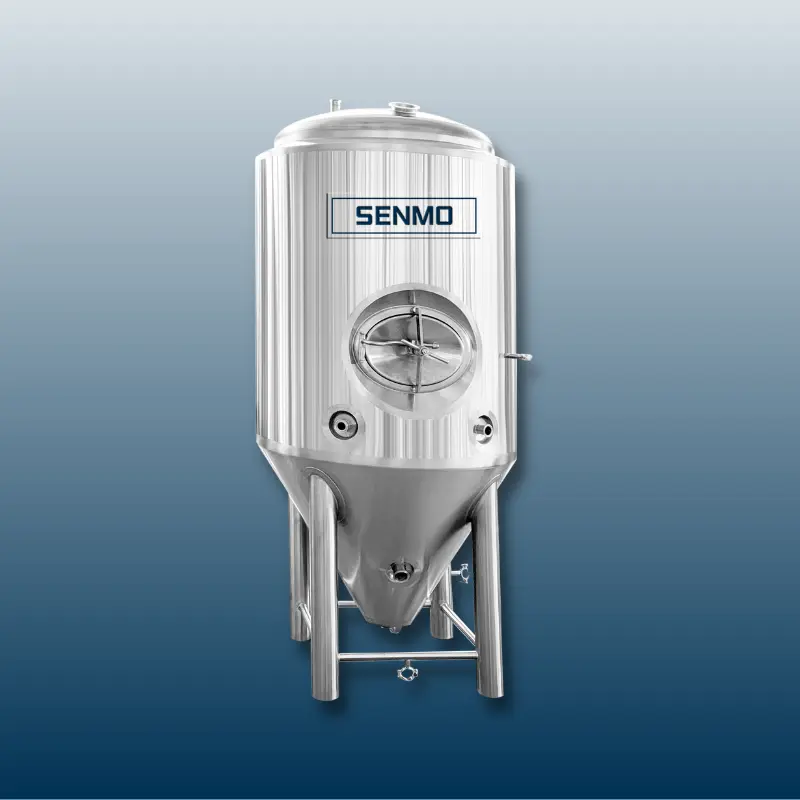In the ever-evolving world of brewing, innovation plays a central role in improving efficiency, product quality, and scalability. Commercial brewing systems have advanced significantly over the years, offering brewers the tools they need to streamline production processes, reduce costs, and improve the consistency of their beer. Whether you’re operating a large-scale brewery or a smaller craft brewery, investing in an innovative brewing system can transform your operation. This article explores the key specifications, practical applications, real-world examples, and performance data of modern commercial brewing systems.
1. Key Specifications of Commercial Brewing Systems
Modern commercial brewing systems are built to accommodate large volumes of production while maintaining high-quality standards. The specifications vary depending on the scale of the brewery, the type of beer being produced, and the level of automation desired. Below are some of the key components and specifications to consider when choosing a brewing system:
1.1 Brewhouse Size and Capacity
The brewhouse is the heart of any brewing operation. It is the facility or system where the initial stages of beer production take place, from mashing to boiling, and sometimes even fermentation, depending on the setup. A brewhouse typically consists of several key pieces of equipment: the mash tun, lauter tun, kettle, and whirlpool. Each of these components plays a vital role in transforming raw ingredients (malt, hops, water, and yeast) into beer.
Key Components of a Brewhouse:
Mash Tun: This is where crushed malt is mixed with hot water in a process called mashing. The mash tun converts starches from the malt into fermentable sugars, which will later become alcohol during fermentation.
Lauter Tun: After mashing, the liquid (known as wort) is transferred to the lauter tun, where the solid remnants of the malt (the grain bed) are filtered out, leaving only the liquid wort to be boiled.
Kettle: In the kettle, the wort is boiled and hops are added to contribute bitterness, flavor, and aroma. The boiling process also sterilizes the wort, eliminating any unwanted microbes.
Whirlpool: After boiling, the wort enters the whirlpool where it is spun to remove hop particles and other solids before cooling. This process ensures a cleaner wort for fermentation.
Brewhouse Size and Its Impact on Brewery Operations
The size of the brewhouse plays a significant role in determining the brewery’s production output and overall operational efficiency. Brewhouse capacity is usually measured in barrels (BBL), with one barrel equaling 31 gallons or 117 liters of liquid.
1. Small Breweries: 5 to 30 BBL
Small breweries, particularly craft breweries, often operate with a brewhouse capacity of 5 to 30 BBL. These systems are ideal for breweries focused on producing small, unique batches of beer, allowing brewers to experiment with flavors and styles while maintaining tight control over production quality. While small in scale, these brewhouses can be quite sophisticated, featuring modern automation, precise temperature controls, and energy-efficient features.
Advantages for Small Breweries:
Flexibility: Allows for the production of a wide range of beer styles without being tied to a single flagship product.
Quality Control: Smaller systems allow for more precise management of every aspect of the brewing process.
Low Capital Investment: A more affordable initial investment compared to larger systems.
However, the downside is that production volume is limited. Smaller brewhouses may struggle to meet the demands of rapidly growing markets or large-scale distribution.
2. Medium Breweries: 30 to 60 BBL
Medium-sized breweries typically operate with brewhouses in the range of 30 to 60 BBL. These systems offer a balance between flexibility and scalability, allowing breweries to increase output while still maintaining the ability to experiment with different styles. These breweries may also start focusing on distribution, supplying local or regional markets.
Advantages for Medium Breweries:
Increased Production Capacity: Can produce larger batches to meet demand, allowing for higher profitability.
Scalable Operations: Capable of scaling production to accommodate growing market demands without a complete overhaul of equipment.
Cost Efficiency: Medium-sized systems typically provide a good balance between production capacity and operational costs, making them a good choice for breweries transitioning from small to larger operations.
The main challenge for medium-sized breweries is maintaining product consistency as production volumes increase. Managing quality control across larger batches without sacrificing flavor or taste is crucial.
3. Large Breweries: 60+ BBL
For large-scale breweries, brewhouses of 60 BBL or more are standard. These breweries focus on maximizing production output and achieving economies of scale. A 60 BBL+ brewhouse can handle the demands of mass production and wide distribution, often focusing on flagship beers with large-volume production. They typically integrate highly automated processes, making it easier to handle high volumes efficiently while maintaining quality.
Advantages for Large Breweries:
High Efficiency: Large-scale systems are designed for high throughput, maximizing the amount of beer brewed with minimal labor.
Cost Savings: Bulk production allows large breweries to purchase raw materials in large quantities at lower costs, improving profit margins.
Consistency: Automation and precise controls ensure that each batch of beer is consistent in flavor, aroma, and appearance, even with high production volumes.
However, flexibility can be an issue for large breweries. These systems are often optimized for high-volume production of a limited range of products, making it challenging to experiment with new recipes or small-batch brews.
Brewhouse Size and Brewery Operations: Key Considerations
When choosing the right brewhouse size for your operation, it’s important to take several factors into account:
1. Production Goals
The most important consideration is production capacity. A small craft brewery that primarily serves a local community may not need a large brewhouse, while a brewery planning to scale quickly will need equipment that can handle higher volumes without compromising quality.
2. Market Demand
Understanding the level of demand for your beer is critical. If you plan on expanding your distribution network beyond local or regional markets, a medium- or large-sized brewhouse will likely be necessary to meet the increased demand.
3. Space and Budget
The amount of available space in your brewery and your budget for equipment will also play a role in the decision-making process. Large systems require more space and a higher capital investment, while smaller systems offer more flexibility at a lower cost.
4. Automation and Control
The level of automation and control is also crucial. For smaller breweries, the investment in automation may not make sense due to the relatively low volume, but as production scales up, automated systems become more attractive for reducing labor costs and improving consistency.
5. Sustainability and Efficiency
For larger systems, energy efficiency and waste reduction are important. Larger systems often come with built-in technologies for heat recovery, water conservation, and automated cleaning systems, all of which contribute to long-term sustainability.
The size of the brewhouse is a key determinant in the success of a brewing operation. Small breweries benefit from flexibility and quality control, medium breweries balance scalability with experimentation, and large breweries achieve mass production with optimized efficiency. The right choice depends on a brewery’s specific goals, market demand, and available resources. Regardless of size, adopting innovative brewing systems can help streamline production, enhance quality, and improve profitability.
1.2 Automation and Control Systems
Modern brewing systems often come with advanced control panels that allow brewers to monitor and adjust the brewing process remotely. These systems can include programmable logic controllers (PLCs), temperature sensors, pressure gauges, and software that enables brewers to track the production process from start to finish.
Full Automation: Automatically controls mash time, boil time, fermentation, and cooling.
Semi-Automation: Requires some manual input for certain processes but reduces labor requirements.
Manual Control: Least expensive option, offering more direct interaction with the brewing process.
1.3 Material and Build Quality
Brewing systems are typically made from stainless steel due to its durability, resistance to corrosion, and ease of cleaning. Higher-quality systems often use polished stainless steel for sanitary purposes and to prevent bacterial contamination.
1.4 Energy Efficiency
In the context of commercial brewing, energy consumption is a significant cost factor. Modern brewing systems incorporate energy-saving technologies such as heat exchangers, insulated tanks, and energy recovery systems. These features help reduce overall operational costs by reusing heat from the brewing process.
Heat Recovery Systems: Capture and reuse heat from the wort boiling process to preheat water for the next brew cycle.
Insulated Equipment: Helps maintain temperature stability, reducing the need for external heating or cooling.
2. Practical Application of Commercial Brewing Systems
While the specifications of a brewing system are essential, the real value lies in how these systems improve efficiency, enhance product consistency, and reduce costs in real-world settings. Let’s examine several practical examples of how modern brewing systems are applied across different scales of operations.
2.1 Craft Breweries: Enhancing Consistency and Scaling Production
Many small craft breweries face the challenge of maintaining the consistency of their beer while expanding production. Investing in an automated or semi-automated brewing system can help address this issue. For instance, systems equipped with precise temperature and time controls allow brewers to replicate the exact conditions that produced their signature beer, batch after batch.
Example: A popular craft brewery in Portland, Oregon, recently upgraded to a 30-BBL automated system. The brewery experienced a 25% increase in production volume and saw a significant improvement in consistency across multiple batches, with fewer variations in taste.
2.2 Large-Scale Breweries: Optimizing Efficiency
Large-scale breweries often prioritize efficiency to keep costs low while scaling production. Advanced systems that integrate multiple processes—such as mashing, fermentation, and bottling—into one unified operation can reduce labor costs and decrease production time.
Example: A well-known European brewery with an annual output of over 1 million hectoliters (HL) invested in a fully automated brewing system that consolidated their production line from three separate stages into one. This integration cut down the production cycle time from 14 hours to 9 hours, allowing the brewery to increase output by 30%.
2.3 Sustainability and Waste Reduction
Sustainability is a growing concern in the brewing industry. Innovative systems are designed to minimize waste and reduce environmental impact. Features such as water treatment systems, automated cleaning-in-place (CIP) systems, and the use of renewable energy are becoming increasingly common in commercial brewing systems.
Example: A craft brewery in San Diego partnered with an engineering firm to install a water filtration and recycling system, which allowed them to reuse up to 70% of the water used in the brewing process. Additionally, they incorporated solar panels to offset energy costs, significantly lowering their carbon footprint.
3. Data-Driven Insights: Performance Metrics and Efficiency
To understand the impact of innovative brewing systems on efficiency, we must look at some performance metrics. Modern systems often provide real-time data that helps brewers fine-tune their processes and monitor their production’s performance. Key data points to track include energy consumption, water usage, production times, and yield efficiency.
| Parameter | Before System Upgrade | After System Upgrade |
|---|---|---|
| Production Cycle Time | 14 hours | 9 hours |
| Energy Consumption | 450 kWh per brew | 350 kWh per brew |
| Water Usage | 6.5 L per L of beer | 4.2 L per L of beer |
| Yield Efficiency | 92% | 98% |
| Beer Consistency (Quality Control Score) | 85% | 98% |
Example: A U.S.-based brewery that implemented an automated fermentation control system achieved a 6% increase in yield efficiency and a reduction in energy consumption by 22%, improving their overall profit margins while reducing their environmental impact.
4. Conclusion: The Future of Brewing
As technology continues to advance, the future of commercial brewing systems looks promising. Breweries are increasingly adopting smart brewing systems that integrate machine learning, AI, and data analytics to further optimize production. With the right system in place, breweries can not only improve efficiency and consistency but also enhance the sustainability of their operations.
Key Takeaways:
Capacity and Automation: Breweries of all sizes can benefit from systems that offer scalability and automation. Smaller breweries benefit from improved consistency, while larger breweries focus on optimizing efficiency.
Sustainability: Modern brewing systems are designed with energy efficiency and waste reduction in mind, offering long-term cost savings and reducing environmental impact.
Data-Driven Optimization: The integration of data analytics in brewing systems allows brewers to continuously monitor and optimize processes, enhancing both product quality and profitability.
In summary, the investment in innovative commercial brewing systems pays dividends in both the short and long term. By focusing on quality, efficiency, and sustainability, breweries can stay competitive in an increasingly challenging market.
